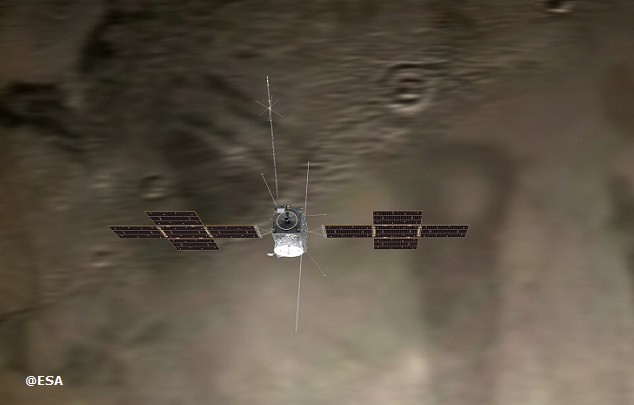JUICE: An Unprecedented Exploration Mission

On April 14, the Jupiter Icy Moons Explorer (JUICE) was successfully launched from the European Space Port in French Guiana, onboard an Ariane 5.
JUICE is part of the Cosmic Vision 2015‑2025 program of the European Space Agency (ESA). The aim of this mission is to study the existence of habitable environments around the planets known as gas giants, and for this purpose, Jupiter’s system will be used as an archetype for the numerous giant planets that are now known to exist in orbit around other stars.
GMV is playing a fundamental role in this mission, because in addition to designing and developing the mission control system (MCS), which is responsible for tracking the spacecraft and for all ground segment control operations, the company will also be responsible for providing maintenance and support for this system during the mission’s entire duration.
GMV has also contributed to development of various components of the flight dynamics system (FDS), and it will also be involved in their operation. This system is responsible for determining and controlling the spacecraft’s orbit and attitude. GMV will also be contributing to maintenance of this FDS during the mission’s entire duration.
GMV is a provider of satellite control systems not just for the ESA (with GMV acting as a supplier for most of its Earth observation missions as well as for its planetary exploration missions such as Bepi-Colombo and Solar Orbiter), but also for the European institutional market in general (where GMV is a supplier for the Galileo mission control center for the European Commission, and for Sentinel‑3, MTG, and EPS‑SG for EUMETSAT). This predominant position in the institutional market complements the leading position that GMV now holds in the worldwide market for commercial satellite operators.
About the JUICE mission
Jupiter is the largest planet in our solar system, with a diameter of 70,000 kilometers and a mass greater than the combined mass of the rest of the planets. It is the type of planet known as a gas giant, without a solid surface. Its atmosphere occupies a large portion of its total volume, and it possesses a magnetosphere that consists of a high-intensity magnetic field. Jupiter’s system is often compared to a miniature version of a solar system, because the planet is surrounded by an extensive system of rings and a large number of moons (80 recorded so far), with the largest of these being named Io, Europa, Ganymede, and Callisto.
Once in space, JUICE will perform a series of gravitational flybys of the Earth-Moon system (2024), Venus (2025), and Earth (2026, 2029), with continuous orbits around the sun in between. This will put the spacecraft on a course towards Jupiter, where it will arrive in July 2031. Once there, it will remain for at least three years, to perform observations of the planet and some of its moons.
Currently the only known forms of life are found on Earth, but discovering life in other parts of the universe has always been one of the major goals of space science.
